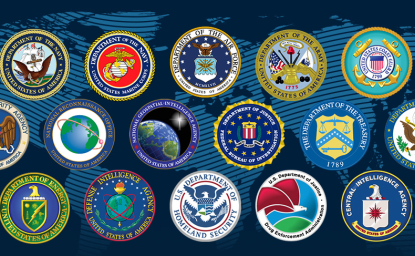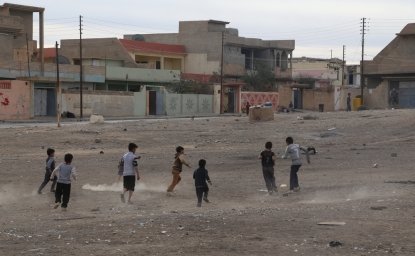The Muslim world is in a deep state of flux. A confluence of trends—ideological, geostrategic, sectarian, demographic, economic, and social—will shape the future of jihadism. In crafting policies to deal with jihadi movements, the United States and its allies face complex challenges. They cannot fight terrorism by simply “fighting” terrorism. Military means can disrupt, but they can’t permanently dismantle or reverse a trend initially spawned by deep political discontent.
The policy options involve choices that may contradict one another, allies who have conflicting priorities, and the potential for unintended, unforeseen, and costly consequences. The course charted will involve policy considerations far beyond the fate of specific movements or individual countries.
The Muslim world is in a deep state of flux. A confluence of trends—ideological, geostrategic, sectarian, demographic, economic, and social—will shape the future of jihadism. In crafting policies to deal with jihadi movements, the United States and its allies face complex challenges. They cannot fight terrorism by simply “fighting” terrorism.
Collaboration
The United States cannot protect its interests in the region by acting alone. Combatting terrorism is costly in human capital and financial resources. Since the 1980s, confronting extremism has increasingly relied on international cooperation and coalitions—both with regional and international allies. But sustaining partnerships often involves compromises; each country has its own priorities, political realities, and strategies for protecting its interests. These can conflict.
Brokering common approaches—and building the counterterrorism capacity of partners—can get sticky. Allies have used the terrorist threat (and surely will again) to gain political support, financial resources, military equipment, or intelligence to address tangential issues that may not always be in U.S. interests.
Local Partners
To be credible, the United States will need legitimate local political partners to take the lead—politically and militarily—in stemming extremism. Those partners will need to have broad national support and security forces that are capable and loyal. The U.S. experience in Iraq between 2003 and 2011 demonstrated the dangers of supporting a leader who alienated a significant sector of society. It also showed that training and arming thousands of regular troops does not necessarily ensure a reliable or competent local partner.
Political Solutions
Terrorism is an inherently political form of violence. Counterterrorism is therefore an inherently political endeavor as well. Any counterterrorism program should be sensitive to public opinion at home, in the theater of terror, and in the wider world. Marginalizing extremism requires creating a political environment in which jihadism has less and less appeal over time. In Iraq, for example, the military has made major headway against ISIS, but the government has not brokered a basic power-sharing agreement among the country’s diverse Sunni, Shiite, Kurdish, and other communities in the thirteen years since the fall of Saddam Hussein. The military campaign has repeatedly been out of sync with a political resolution. The success of the military surge in 2007 that marginalized al-Qaeda in Iraq was followed by a botched political program that only further alienated Sunnis and led to the emergence of a reinvigorated ISIS. Creating stability ultimately requires political and military simultaneity.
Terrorism is an inherently political form of violence. Counterterrorism is therefore an inherently political endeavor as well. Any counterterrorism program should be sensitive to public opinion at home, in the theater of terror, and in the wider world.
Measured Response
Any policy should be wary of taking the bait from extremists. ISIS and al-Qaeda have both deliberately tried to lure the United States into a wider military confrontation—on their turf. Terrorists historically have tried to provoke adversaries into actions that are costly, messy, deadly, and, in the long-term, ineffective. Successful provocations further polarize societies, in turn helping jihadi movements recruit and rally wider support for their violent campaigns.
The Sectarian Divide
Across the Middle East, long-standing tensions between Sunnis and Shiites have deepened—in escalating phases—over the past four decades. Extremism has emerged within both sects; it has fed off and fueled their differences. The split plays out in three Middle East conflicts: In Iraq, Sunni discontents and extremists are pitted against the Shiite-led government in Baghdad. In Syria, Sunni rebels are fighting an Alawite government propped up by Shiites from Lebanon’s Hezbollah militia and Iran. In Yemen, Zaydi Shiite rebels, the Houthis, are fighting a Sunni-majority government in a conflict that has drawn in Gulf countries on both sides.

Any policy designed to minimize extremism should address—and try to help defuse—sectarian tensions. It may also require some degree of balance so that it does not fuel a sense of vulnerability among sects—or others that emerge in their wake.
In some countries, such as Iraq, the United States underestimated the discontent among Sunnis, who account for up to 90 percent of the Arab world’s 400 million people and at least 85 percent of the Muslim population globally.[68] Significant numbers of Sunni fighters have joined extremist groups—including ISIS and al-Qaeda—to protect their identities and communities and not because they adhere to an extremist ideology.
Regional Rivalries
The Middle East is badly split by political competition among its major powers, which has complicated and hindered the collaboration necessary to defeat jihadi extremism—in both its military and political forms. One major rivalry pits predominantly Shiite Iran against Sunni Saudi Arabia. The countries’ differences are not, however, over religious dogma; they center instead on rival quests for regional influence. Other fluctuating rivalries have divided Saudi Arabia and Qatar, Turkey and Iran, and Turkey and the Kurds. Some of these regional rivalries are strong undercurrents in conflicts in Iraq, Syria, and Yemen. The United States will be unable to craft durable long-term policies to counter jihadi violence without navigating—and mitigating—the broader causes behind these rivalries.
Human Factors
Jihadism is most prevalent in countries with serious social discord. The United States will need to be sensitive to those problems in crafting a long-term strategy and allocating financial resources. The byproducts of conflict or prolonged instability can alter the environment in ways that play to the jihadist narrative. For example, the young are often the most traumatized in crisis. A generation of children whose life experience has been shaped by war and limited access to education is particularly vulnerable to recruitment by extremists.
Social dislocation is another issue that intersects with the growth of extremism. Four Middle East wars—in Syria, Iraq, Libya, and Yemen—have produced the largest displacement of human beings, both inside their countries and beyond their borders, since World War II. This has not only created a humanitarian crisis; it has destabilized the region. Migrants and refugees thrust into unfamiliar social contexts have been cut off from traditional modes of authority, whether tribes, local governments, or a former political establishment. With limited prospects for employment or social mobility, individuals who are unmoored look for an authority, a sense of purpose, and a way to escape their harsh circumstances. Any policy should seek to contain the spread of jihadism among wider sectors by addressing social stresses and challenges of survival.

Prison Problem
One of the toughest challenges will be figuring out the fate of jihadis captured on the battlefield. Prisons in the region—Sednaya in Syria, Tora in Egypt, Abu Salim in Libya, Roumieh in Lebanon, al-Ha’ir in Saudi Arabia, and Mornaguia in Tunisia—have been incubators of extremism.
All the senior leaders of ISIS passed through U.S. detention centers, notably Camp Bucca, in Iraq—including the Islamic State’s Caliph Abu Bakr al-Baghdadi and the top propagandist and foreign operations chief Abu Mohammad al-Adnani (who was killed in a U.S. airstrike in August 2016).[69] They went in as low-level detainees and then created cells, structures, and plans in prison critical to expanding their operations and impact once they were released. The detention centers were, effectively, “prison emirates.” Abu Ghraib and Guantanamo Bay have also been lightning rods for anti-American sentiment even among Muslims who reject extremism.
Troubled Landscape
Jihadists exploit geography. Extremists like to operate in areas that provide cover or are less accessible, whether in dense civilian neighborhoods or remote safe havens. In crafting policy, the United States should pay particular attention to the “seams” of active conflicts—the peripheries, often ungoverned or unpatrolled, that are attractive to extremist groups as logistical waypoints.
For example, ISIS was able to gain a foothold in Sirte because the city was caught between Libya’s rival governments based in Tripoli and Tobruk. The Middle East map has many other potential blind spots that could be exploited by current or future extremist groups: parts of Jordan, the Sinai, southeastern and southwestern Tunisia, southwestern Libya, eastern Yemen, southern Algeria, and northern Nigeria. As ISIS loses territory, it has fallback positions in Abu Kamal and al-Qa’im on the Syrian-Iraqi border and in Lebanon’s Qalamoun Mountains bordering Syria. Places around the Mediterranean basin are the most problematic for Western interests due to their proximity to Europe.
Physical safe havens are increasingly complemented by virtual safe havens. Social media platforms, mobile technology, and encryption provide online spaces beyond the sight and reach of law enforcement, military, and intelligence organizations.
Domestic Fallout
Policy on foreign extremist movements should be conscious of repercussions and sensitivities at home. ISIS has been particularly adept at exploiting fractures in Western societies. It has appealed to marginalized Muslim communities in France, Belgium, and other European countries to join the jihad in Syria and Iraq or carry out attacks in Europe and the United States. Its propaganda specifically outlines a strategy to destroy peaceful coexistence within diverse societies. Increased hostility towards Muslims in the United States, including refugees fleeing wars in Muslim countries, could fuel radicalization or push those who are already radicalized to act violently.
Defining the Threat Landscape
In defining the threat, policy should also differentiate among disparate currents comingling within the jihadi milieu. Not all jihadi groups are the same in terms of goals, strategies, tactics, or willingness to collaborate. Not all jihadi groups remain static in their stated goals over time. One-size policy solutions do not fit all.
The United States has yet to develop a viable policy towards groups that do not explicitly seek to harm the United States but that embrace values, goals, and practices not in U.S. interests. Violence in war zones can complicate distinctions. The wide spectrum of extremist groups can defy simple or single categorization. Opposition groups employ the guerilla tactics of rebels and the violent practices of terrorists. Many groups increasingly fall into a middle gray zone, especially “country-first” jihadis. All jihads—in the end—are at least partly local.
Terrorism, a type of warfare that dates to ancient times, will never be fully eradicated. In the twenty-first century it is an instrument of asymmetric warfare increasingly popular among nonstate actors, militias, and unethical governments. The threat to the U.S. homeland is real and persistent.
Ahrar al-Sham, for example, espouses a jihadi Salafist worldview, but it claims to limit its fight to war against the Assad regime in Syria. It is one of the largest armed opposition groups in Syria and has working relationships with a wide variety of actors, ranging from the U.S.-backed Free Syrian Army to the former al-Qaeda branch Jabhat Fateh al-Sham. Its ties with Turkey and Qatar add another complication for the United States in determining its status. In the past, some U.S. officials considered Ahrar al-Sham a terrorist group, while others were willing to engage with the group to help broker a diplomatic end to Syria’s war.
Policy Realism
Terrorism, a type of warfare that dates to ancient times, will never be fully eradicated. In the twenty-first century it is an instrument of asymmetric warfare increasingly popular among nonstate actors, militias, and unethical governments. The threat to the U.S. homeland is real and persistent. But in the fifteen years between the 9/11 attacks and late 2016, fewer than 100 people have been killed as a result of jihadi terrorism inside the United States.[70] No amount of military manpower or financial resources will be able to prevent 100 percent of attacks—by any group domestic or foreign.
The Long View
Defeating jihadi extremism and preventing its return requires a long-term policy that not only eliminates fighters but also undermines the legitimacy of violence as a means of obtaining political ends. Eliminating an extremist group physically does not defang its ideology or change the underlying circumstances that allowed the group to gain traction in the first place. Reconstruction, rehabilitation, and particularly reconciliation are just as important as any military counterterrorism campaign in building societal resilience against the appeal of extremism. Failure to carry out these steps has been a recurrent problem.
After the Soviet Union’s withdrawal in 1989, the outside world did little to rebuild Afghanistan, which descended into civil war. The Taliban seized power in the mid-1990s and offered refuge to al-Qaeda. In Iraq, the al-Qaeda franchise suffered serious setbacks between 2007 and 2011 as a result of the Sunni Awakening and the U.S. military surge. But Baghdad did little to alleviate the grievances of its Sunni minority, and its inaction contributed to the reemergence of ISIS.
The United States should also look at jihadist groups as increasingly mobile transnational movements. These groups do not think in terms of international boundaries. They are purposefully trying to alter the geographic status quo.
Future Jihads
The pace of change in the Middle East is unprecedented. So is the range of possible future jihadi threats. No single analytical framework or model suffices to predict the future. Anticipating the next conflict zone—and particularly the next phase of jihadi extremism—is difficult. Extremist organizations quickly morph and adapt tactics—often faster than large bureaucracies and major armies. The reality is that jihadis may always be one step ahead.
[68]. On demographics of individual countries, see Central Intelligence Agency, The World Factbook, July 2016, www.cia.gov/library/publications/resources/the-world-factbook/; on the global Muslim population, see Pew Research Center: Religion & Public Life, “Mapping the Global Muslim Population,” October 7, 2009, www.pewforum.org/2009/10/07/mapping-the-global-muslim-population/.
[69]. Courtney Kube and Alex Johnson, “U.S. Says It Killed Abu Muhammad al-Adnani, ISIS’ Second-in-Command,” NBC News, September 12, 2016, www.nbcnews.com/storyline/isis-terror/u-s-says-it-killed-abu-muhammad-al-adnani-isis-n647066.
[70]. Peter Bergen, Albert Ford, Alyssa Sims, and David Sterman, “Terrorism in America after 9/11: Part IV. What Is the Threat to the United States Today?,” New America, October 12, 2016, www.newamerica.org/in-depth/terrorism-in-america/what-threat-united-states-today/.
Contributor


The Islamists
Learn more about Hamas and how it relates to similarly aligned organizations throughout the region. Read more

Explore More
Browse Insights & Analysis
The Jihadi Threat: ISIS, al-Qaeda, and Beyond

An Act of Terror Cannot Occur on Russian Soil

